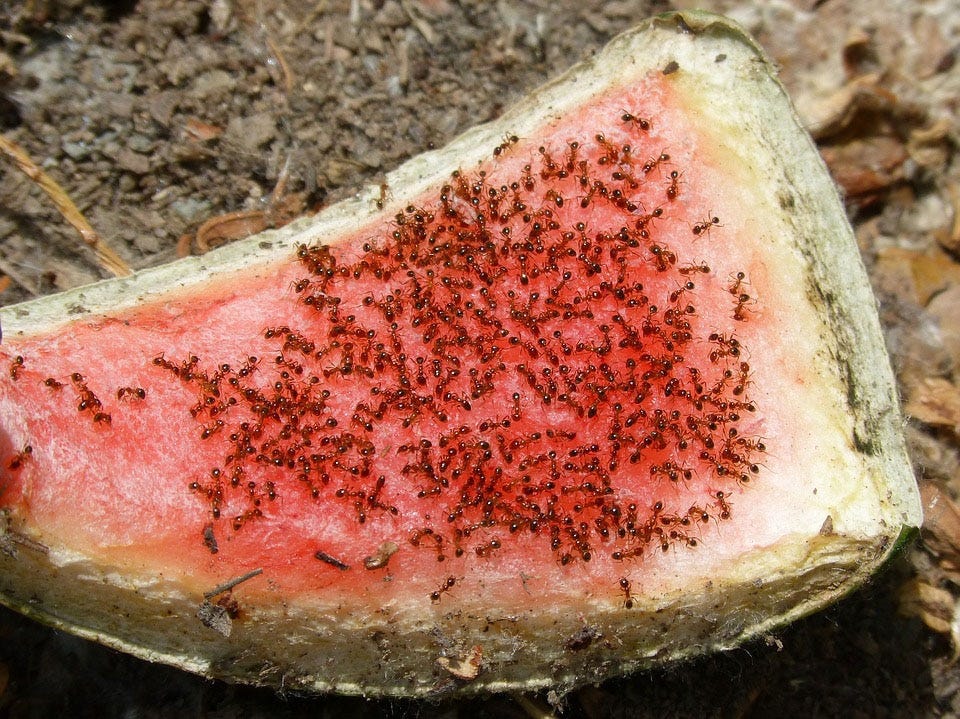![Ants are a common pest in Northwest Florida. [PIXABAY]](http://127.0.0.1/wordpress/wp-content/uploads/2022/01/ghows-DA-685261d3-b638-0602-e053-0100007fa030-6357a481.jpeg)
CRESTVIEW — The return of warm weather means the return of something else all too common in Northwest Florida: bugs.
While some insects irritate people, few insects are harmful to plants. Less than one-tenth of a percent of all insects in Florida are damaging to plants, according to Larry Williams, an expert in residential horticulture at the University of Florida’s Institute of Food and Agricultural Sciences Extension office in Crestview.
“The vast majority of insects that you’re going to encounter are either of no consequence to your lawn, landscape or garden, or they are beneficial,” Williams said. “A lot of folks think that every six-legged critter needs to be killed.”
Some bugs, like the chinch bug, can take over a lawn. According to Williams, they are the number one pest found in lawns seeded with St. Augustine grass, and can kill a lawn if left unchecked. Lush, green lawns attract more insects, including chinch bugs, which will choose greener grass to lay eggs.
Nitrogen is critical for healthy lawns as well as insect development. However, too much nitrogen in soil can lead to more insects due to healthier offspring.
Other insects, like the ladybug or lady beetle, can be beneficial by keeping other common garden pest populations in check.
The overuse of insecticides to indiscriminately kill off any insects living in lawns and gardens can actually make things worse. By killing beneficial insects, the pest population can worsen each year. It can also lead to resistant populations of insects, including those harmful to plants.
Fire ants
The fire ant is a common pest that can be found indoors as well as outdoors. The fire ant is a non-native species believed to have stowed away on ships from South America.
The most visible sign of an ant colony is a mound of loose dirt, but a single mound is only the tip of the iceberg. The nest below can extend to five or six feet deep and be much larger than the diameter of the mound.
According to Williams, a single ant colony can house upwards of 300,000 ants. A queen can lay around 2,000 eggs per day for six years or more. Despite the rapid speed at which they multiply, ant populations can be controlled, if you don’t try to eradicate them altogether.
“If you have a fire ant mound in the back yard in the corner somewhere that you don’t frequent and kids don’t play, leave it alone,” Williams said. “Concentrate your control efforts closer to the home, where kids play, where you frequent.”
Studies have shown that eradicating ant populations entirely can lead to much larger populations turning up in the same area within weeks.
Williams also cautioned not to disturb the mound, no matter how tempting it is. When the mound is disturbed, the ants will instinctively move the queen and eggs to the safety of a new area, where they will build a new mound. This can lead to a never-ending cycle of chasing ant hills around a yard.
One way to stop the spread of an ant colony is to use commercially-available ant bait, but it takes patience. Williams said the ants will eventually take the food back to the queen, but it could take days to weeks for them to bring enough poison back to kill her.
Powdered poisons can also work, but should be spread around the mound in a circle, then spiraled inward toward the center of the mound. These types of poison can work quicker than bait poisons, but also risk disturbing the mound, which could cause the colony to spread.
“They’re all different,” Williams said. “It’s important to read the label and understand how they’re used to achieve control. But you never want to disturb the mound in the process.”
Fungal pests
Not all garden pests in Northwest Florida are insects. Fungal diseases play a large role in the destruction of crops in this area.
“The lengthy period of warm weather we have, the host plant material, the moist environment, high humidity, lots of rainfall, that’s fungal heaven,” Williams said. “The vast majority of plant diseases are caused by some kind of fungus.”
Fungal infections are heavily dependent on moisture. People who think that they have to overwater due to the sandy soil can contribute to the problem, according to Williams.

This article originally appeared on Crestview News Bulletin: Keeping lawn and garden pests under control
